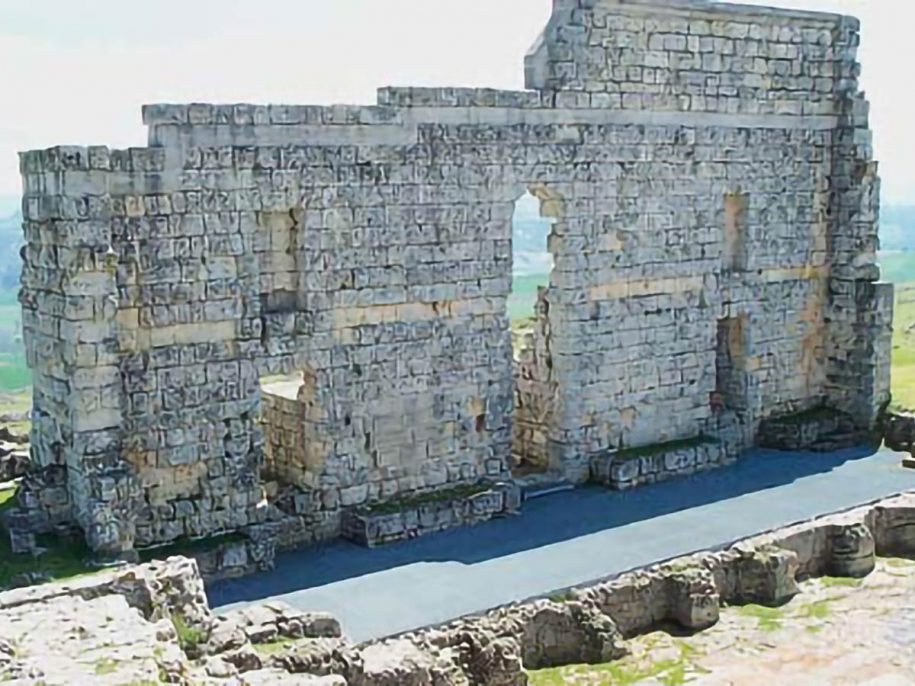The city and archaeological site of Acinipo are located in the Ronda Depression, 20 kilometers from it. It is reached by the Ronda-Sevilla highway, from which in its km. 108, 10 from Ronda, the regional road to Setenil departs, which after 10 km. of ascent, it allows to arrive at the ruins of Acinipo. Located on a large limestone table, with a maximum altitude of 999 m. above sea level, with a total area of 32 hectares. Its location provides it with a strategic value and a visual domain of the territory that surrounds it.
The visible construction remains belong to the Roman city of Acinipo, although investigations and archaeological excavations have shown that the occupation of this settlement is much older, covering a chronology that goes from the fourth millennium BC. to the IV-V century after Christ.
According to different campaigns of archaeological excavations, a series of successive construction phases are developed, centered on the second and first millennium BC, which show the evolution in an area of the town, first prehistoric, which is reaching a large scale, both in extension and in wealth and culminating in an important population nucleus in the 8th to 6th centuries BC. C., predecessor of the Iberian city, which from the 4th century, will be the base of the Roman city of Acinipo.
Of the Roman city, which remains almost entirely unexcavated, what has been done so far allows us to know the good state of conservation of the urbanism, consisting of buildings arranged in stepped terraces, which save the steep natural slope of the plateau where they were located. It has been possible to excavate in new campaigns with very interesting results, where a house (domus) with a lararium has appeared, an altar destined to the worship of the Lares gods, very similar to the house of Melendro in Pompeii and the “castellum aquae” ( related to the hot springs) with an extension comparable to those of Carteya and Itálica, which reflect the importance of this city that minted its own currency, whose symbol was a bunch of grapes with two ears of corn. These hot springs had a system of three conserved stepped pools: caldarium, hot water, tepidarium, warm water and frigidarium, cold water. Likewise, the hipocaustum or underground place has been excavated, excavated in the rock, where the heat that heated the water and the walls of the hot springs was produced.
The defensive system that surrounds the entire accessible part of the city is visible on the surface, of which canvases of cyclopean walls are preserved, with circular and square towers, observable on the eastern slope of the mesa. In this same sense, it is possible to observe the monumental southern gate of the city, which is conserved in a relatively good state of conservation.
A multitude of construction remains of all kinds can be seen scattered on the plateau, but what may be of greater interest are a series of epigraphic monuments, some well preserved, which give an idea of the importance of the city. It is also possible to observe the quarries for the extraction of ashlars for the construction of main public and private buildings, which are located within the limits of the city itself.
However, the best preserved building and symbol of the city is its theater. Excavated in the hillside all its bleachers, the casting supplied all the stone necessary for the elevation of the front of the scene, with two floors, in the upper one with niches for the statues of the characters or gods to whom the work is dedicated, and the bottom with access doors to the dressing rooms. The Acinipo theater is one of the best preserved in the Iberian Peninsula.
Acinipo

Comments are closed.
